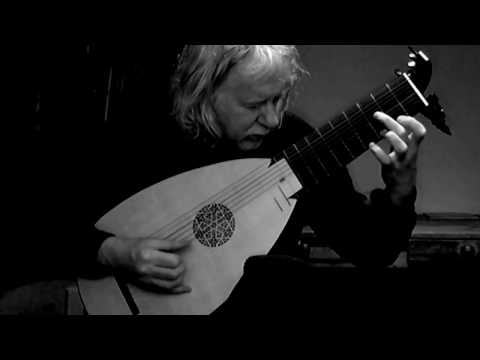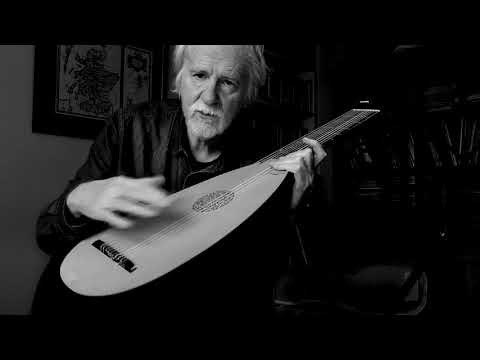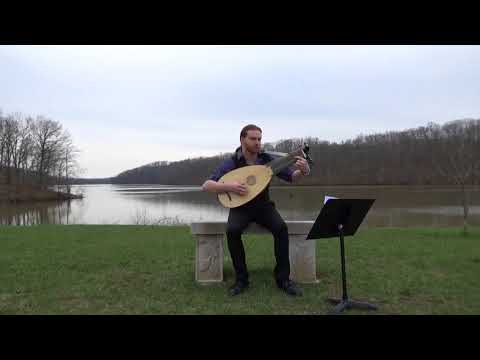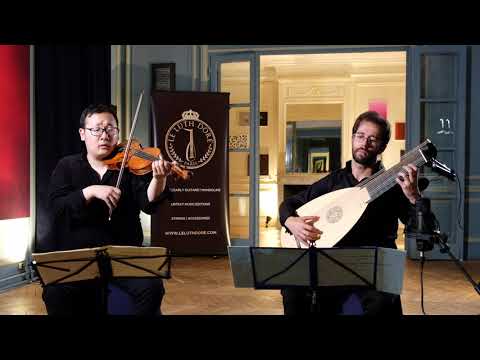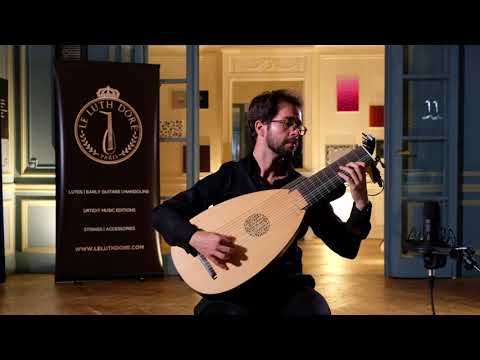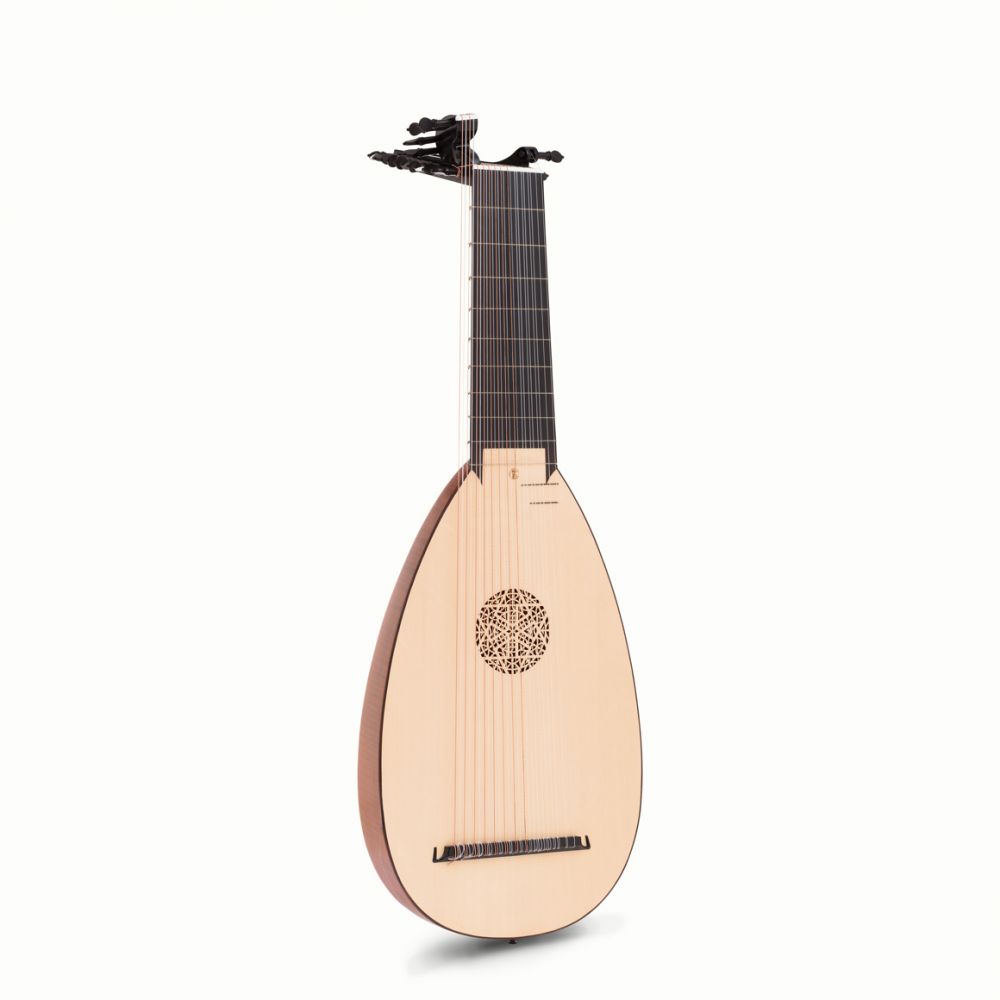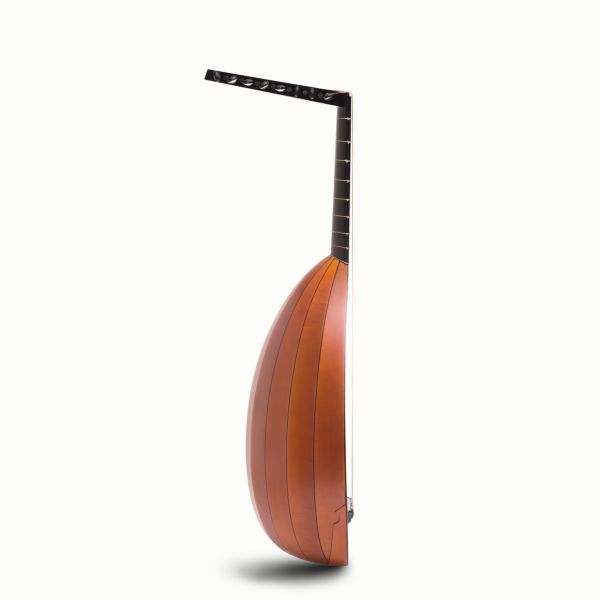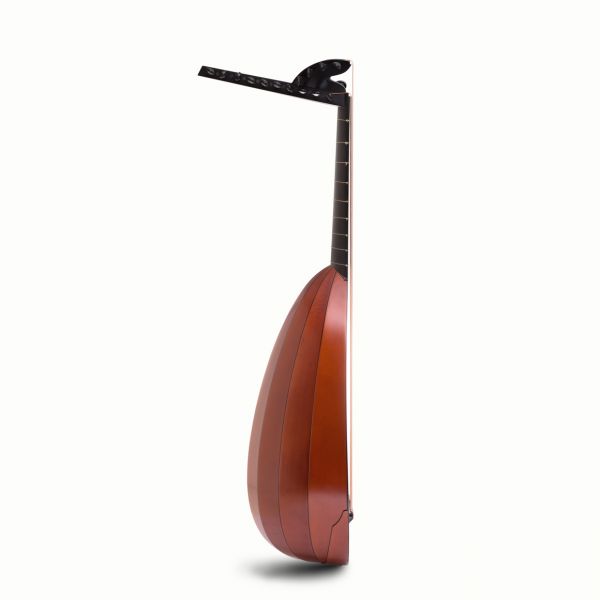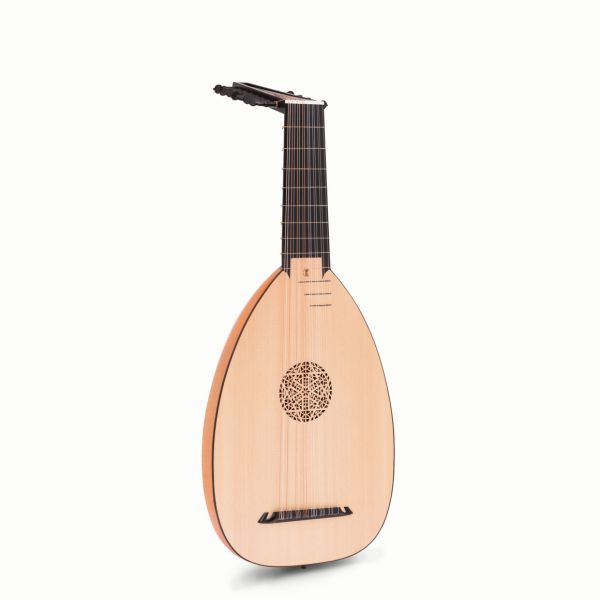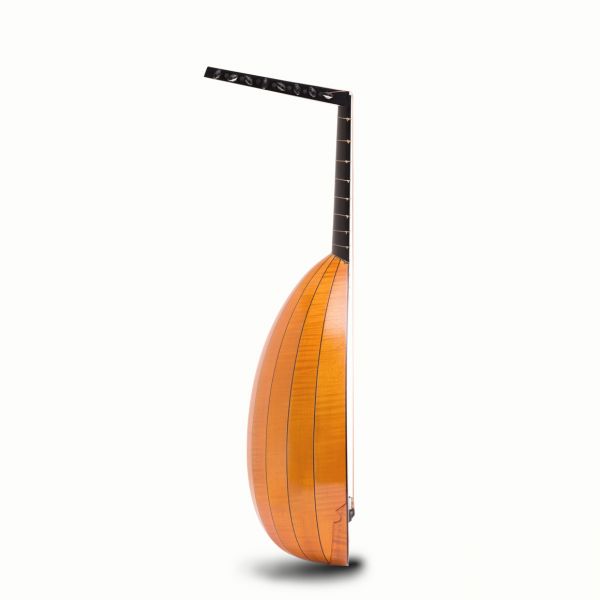LLD ® Weiss 13c Baroque lute
Bowl in Flamed Maple • Bright treble, strong mid-range and full bass sound • LLD ® FG-B case included
• Model: Weiss
• Type: Baroque lute
• Number of strings: 13 courses
• Tuning pitch: A 415 Hz
• Tuning: Aa, Bb, Cc, Dd, Ee, Ff, Gg, Aa, dd, ff, aa, d, f
• String length: 690 mm
• String spacing at the nut: 75,5 mm
• String spacing at the bridge: 140 mm
• Ribs: 9
• Weight: 1100 g
Unique masterpieces produced by the hands of craftsmen
Quality, refinement and tradition. Le Luth Doré ® lutes, early guitars and mandolins are designed in Paris by experienced european luthiers, and handcrafted in our high quality new China-based manufacturing facility, by today’s top luthiers in the country.
LLD® instruments represent the culmination of over 40 years of music instruments manufacturing by our European and Chinese luthiers and 20 years of music expertise by world famous lutenist Miguel Serdoura.
The tone, resonance, and beauty of fine instruments are all dependent upon the wood from which they are made. The wood used in the construction of LLD ® lutes, early guitars and mandolines is carefully chosen and aged to guarantee the highest quality.
With select solid woods and impeccable workmanship, LLD ® instruments will satisfy anyone looking for a truly superior sound and an unique experience with exquisite early music instruments.
All LLD ® instruments are sold with modern, exclusive and refined fiberglass hard case, featuring a convenient climatic system to ensure your instrument great protection against travel, storage and climate changes.
History of the lute
The lute is probably the most widely distributed type of stringed instrument in the world. In Europe, the lute enjoyed great popularity from the 15th-18th centuries where it had an important role in both courtly and popular music. It is depicted with great frequency in artworks from the Middle Ages, Renaissance and Baroque periods. It was the principal plucked string instrument of its time. It originated in the Middle East as the Arabic ?ud. The instrument was brought to Europe in the 13th century where it was adapted to suite local musical styles. The European lute has a deep, pear-shaped body, a neck with a bent-back pegbox, and strings tied to a bridge glued to the instrument’s belly. European lutes have a large, circular sound hole cut into the belly and ornamented with a perforated rose carved from the belly’s wood.
The earliest European lutes followed the Arab instruments in having four strings that were plucked with a quill plectrum. By the mid-14th century the strings had become pairs, usually referred to as courses. These were tuned in unison or, in the bass strings, at the octave. Late in the 15th century, the plectrum was abandoned in favor of playing with the fingers, movable gut frets were added to the fingerboard, and the instrument acquired a fifth course. The frets were important as they opened the way for lutes to play multiple notes or chords and still be in tune.
The Renaissance lute
By the 16th century the classic form of the Renaissance lute was established, with its six courses of strings (the top course was a single string) tuned to G–c–f–a–d′–g′, ascending from the second G below middle C. Later in the sixteenth century, additional courses of strings were added to the 6-course instrument. Some of leading lute makers of the time included Laux Maler, Hans Frei, Vendelio Venere, Moeses and Magno Tieffenbrucker.
The archlute, chitarrone and the theorbo
By the early 17th century the 7-course lute was extended by the addition of extra basses, resulting in lutes of 8, 9 and 10 courses. Instruments changed in line with these additional bass strings, or diapasons, which required the widening and lengthening of the neck and head of the instrument. Such modified instruments were called archlute, chitarrone and the theorbo.
The Baroque lute
Shortly after 1600, modified tunings were introduced by French lutenists giving rise to a few decades of great experimentation. However, by around 1650 the scheme known today as the "Baroque" or "D minor" tuning became the norm and the number of strings grew even more to 13 by the 18th century. The first six courses outline a d-minor triad (ascending A-d-f-a-d’-f’) followed by an additional 5 to 7 courses, descending stepwise from the low A. Lutes in D minor tuning today are known as Baroque lutes and can have 11, 12 or 13 courses, according to the nature of the different types of repertoire.
Modern lutenists tune their lutes, vihuelas, archlutes or theorbos to a variety of pitch standards, ranging from A = 392 to 470 Hz, depending on the type of instrument they are playing, the repertory, the pitch of other instruments in an ensemble and other performing expediencies. No attempt at a universal pitch standard existed during the period of the lute's historical popularity. In modern days it is usual to tune the Renaissance lute in A to 440 Hz and the Baroque lute in A to 415 Hz.
© 2019 Le Luth Doré ®
Wood and color characteristics
The LLD ® Weiss 13c Baroque lute bowl is made with Flamed Maple, a highly dense and reflective wood yielding a loud, projective, and sustained tone. Maple wood is celebrated both for its range of figuring patterns, from curly or flamed to quilt to birdesye, which add beauty to an instrument.
The orange goldish color of our mat finishing oil varnish used with our Flamed Maple wood makes our LLD ® lutes look aesthetically very similar to the varnish color of historical lutes from the 16th, 17th and 18th centuries.
Sound characteristics
The most important sonic quality maple is known for is its linearity — it is a very predictable transparent-sounding wood. It reflects exactly what the design and the player's style bring to it.
Flamed Maple is a much appreciated wood for its transparency of sound, reflecting precisely the sound qualities of the soundboard but without coloring it too much. The Flamed Maple of our LLD ® lutes delivers an appropriately loud tone that projects well.
Flamed Maple or Ribbon Striped Sapelli?
Ribbon Striped Sapelli is an harder wood then Flamed Maple. Both tend to be direct, bright and warm at the same time, but Ribbon Striped Sapelli exhibits warmer treble presence and deeper basses than Flamed Maple – that will be the main sound difference among this two woods.
Flamed Maple as a very direct but warm sound, and has fewer overtones or complexity then Ribbon Striped Sapelli. What you hear initially with Flamed Maple, is what you get.
The sound the lute projects at the attack is still the same sound you will hear as the note decays. Flamed Maple is a wood that has to sampled with age to be fully appreciated.
Ribbon Striped Sapelli sound will be a little less direct than maple, with more overtones, and adds a bit more complexity to the sound of the lute overall.
Spruce is the most common tone wood used for the soundboard of the European lute family instruments. LLD ® uses only high grade and excellent quality solid spruce soundboards on the construction of its lutes.
The top, or soundboard, as the name suggests, bears great influence on the way a lute sounds, though the back also is a key component. The top seems to affect the lute's responsiveness, its sustain and even some of its overtone coloration and quality of each note’s fundamental tone. Taking in consideration the differences of the Flamed Maple wood (which develops more the fundamentals of the sound) and the Ribbon Striped Sapelli (which develops more the overtones) we have chose two different sorts of spruce in order to equilibrate those specificities.
Instrument settings
All our LLD ® lutes are carefully inspected in Paris before shipment to the customer by a professional, conservatory-trained lutenist and adjusted as necessary by a luthier in Paris specializing in making, restoring and repairing historical and modern professional quality lutes.
Our instruments are precisely designed and then adjusted to assure proper scooping of the top and height of the nut and the bridge to provide optimal action of the strings.
• Top in high grade tight grain solid spruce, finished and slightly varnished
• Bowl in flamed maple, finished and oil varnished in orange color
• Spacers in ebony
• Neck, bridge and pegbox in maple, finished and varnished in black
• Pegs in ebony
• Fingerboard and soundboard frets in ebony
• Fingerboard frets in natural sheep gut
• Nut in natural cow bone
• Laser carved rosette
• Strung with Aquila Nylgut ® strings
• LLD ® FG-B case included
• Two LLD ® L1 case straps included
